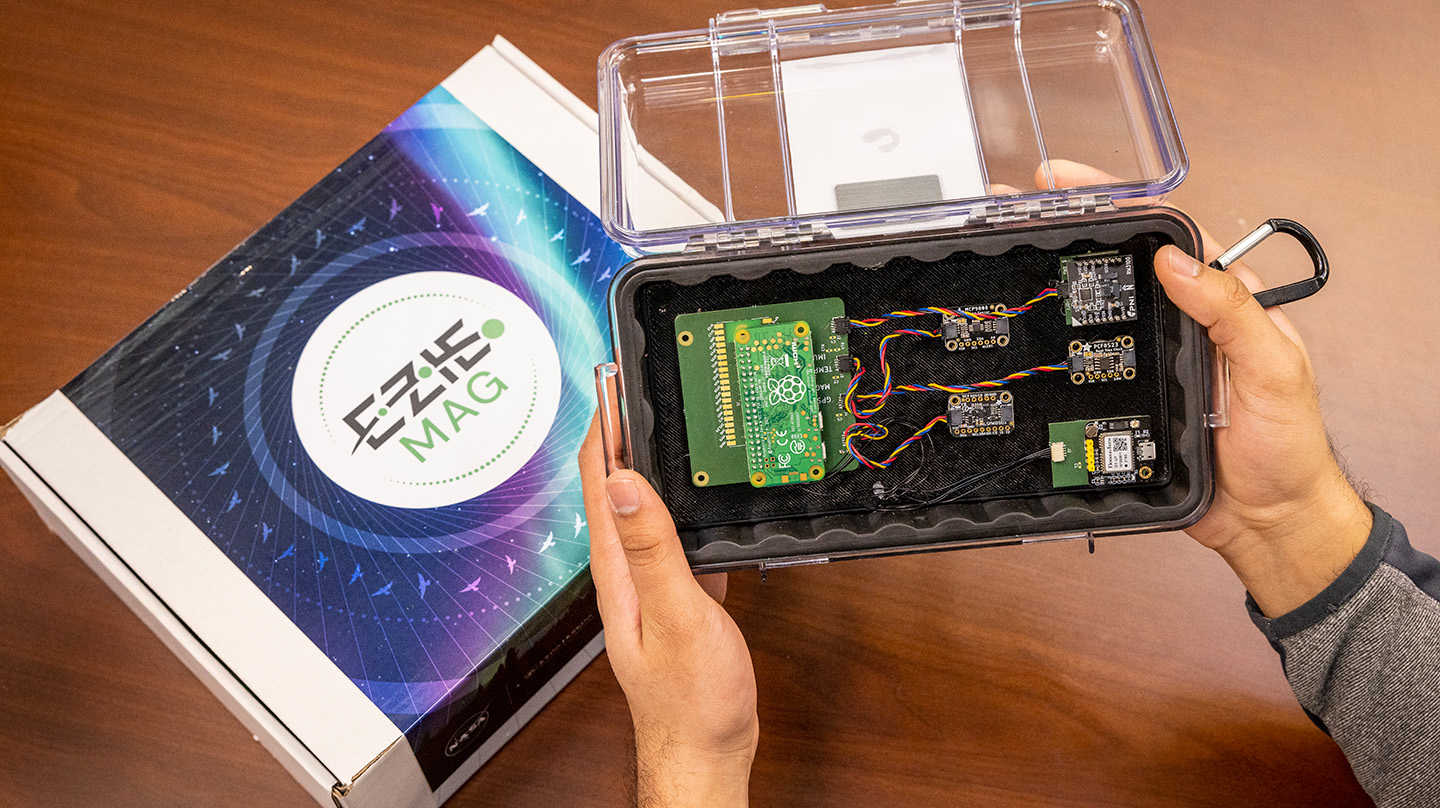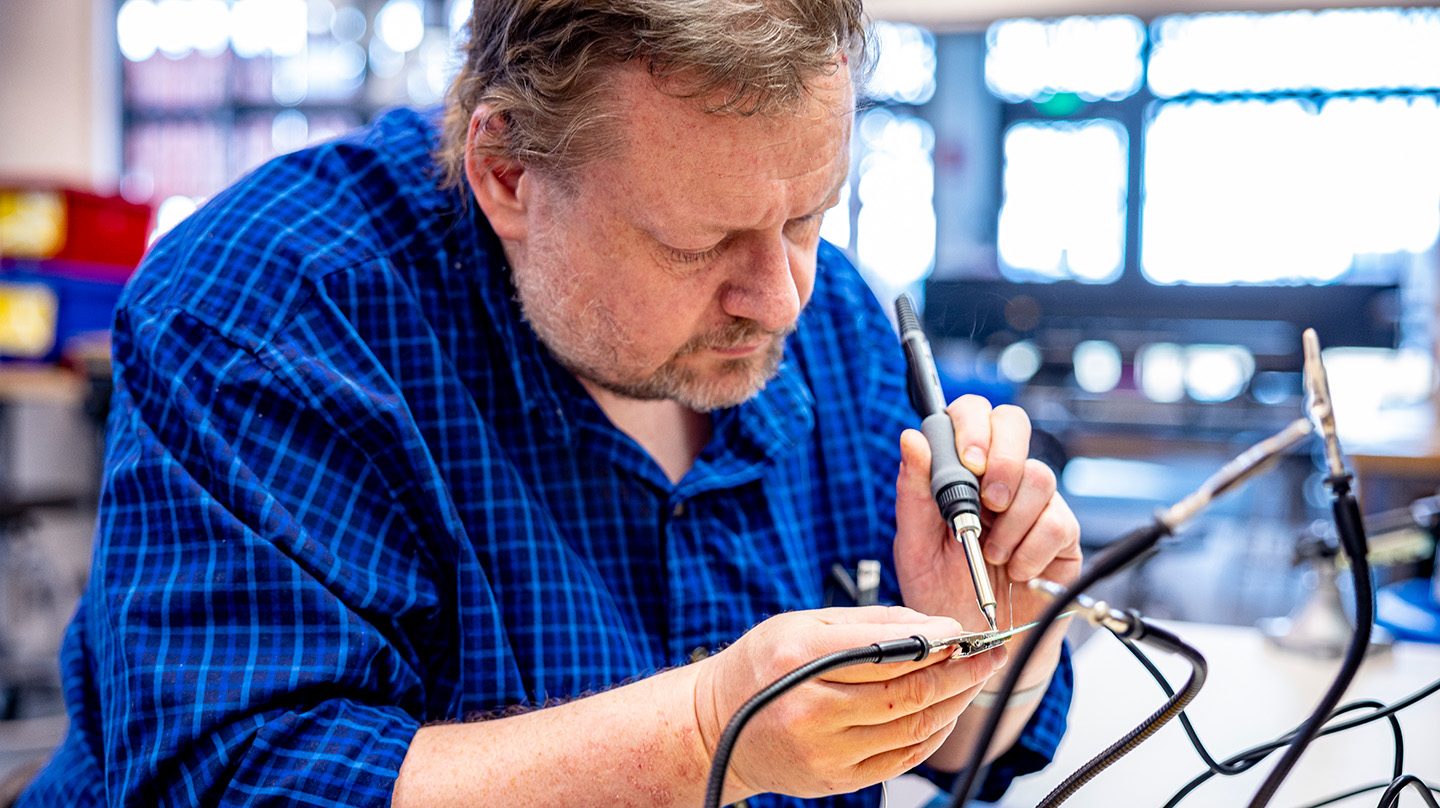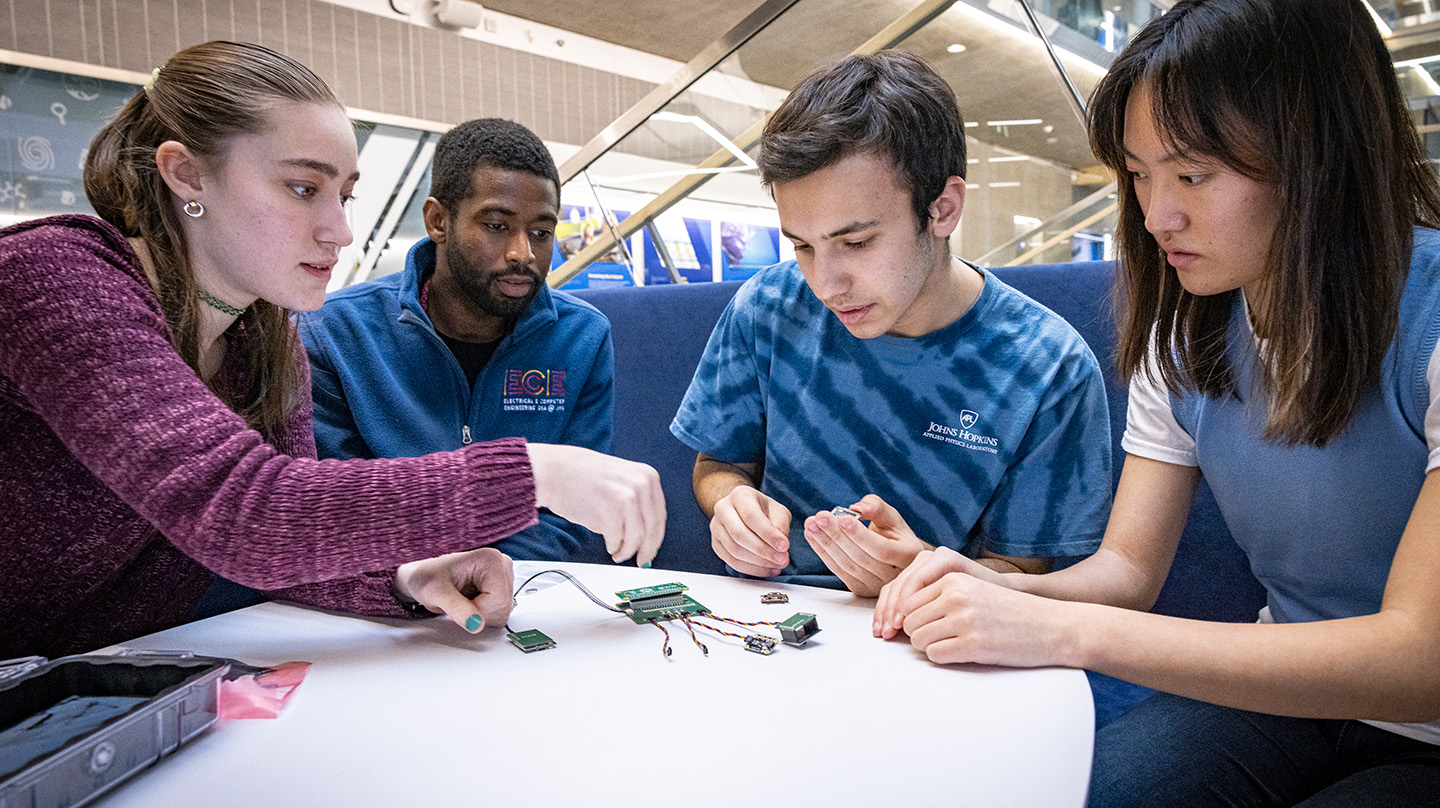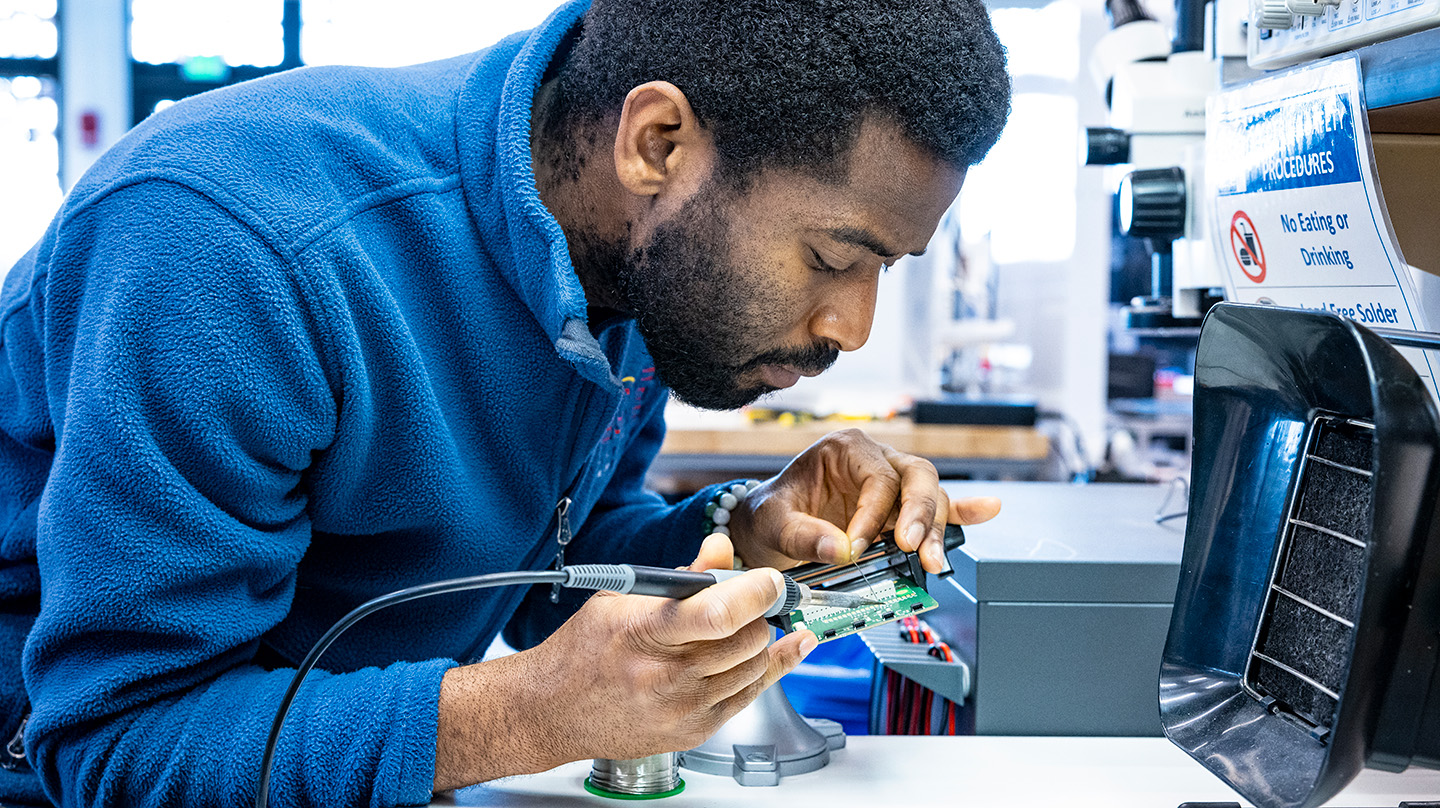Press Release
How EZIE-Mag Pushes to Make Science More Accessible and Inclusive
NASA’s Electrojet Zeeman Imaging Explorer (EZIE), scheduled to launch in late 2024, will image the magnetic fingerprint of the electrical currents that flow in the upper atmosphere and between Earth and the surrounding space.
But it’s not just EZIE scientists who will study those connections — you can too. Researchers, students and anyone interested in how Earth interacts with space can be a contributing member of the EZIE team.
Before launch, the EZIE team at Johns Hopkins Applied Physics Laboratory (APL) in Laurel, Maryland, will make and freely distribute approximately 700 magnetometer kits (nicknamed EZIE-Mag) to teachers and students across the United States, with a specific focus on Indigenous schools.
These kits will let students build their own science-quality magnetometers. These lunchbox-sized instrument suites allow anyone to make measurements, which will be combined with EZIE’s measurements made from space to finally unlock the mysteries associated with this vast electrical current circuit.
“EZIE-Mag provides the mission with a unique opportunity to engage citizen scientists in this important research,” said Dr. Nelli Mosavi-Hoyer, project manager for EZIE at APL. “Measurements made by these kits will be complementary to data collected by the three EZIE spacecraft.”
The EZIE Mission
EZIE is APL’s first mission to image the magnetic fingerprints of Earth’s auroral electrojets, electrical currents that flow between Earth and space.
The mission will star a trio of CubeSats, satellites roughly the size of a small suitcase, designed to move pole to pole and map the electrojets.
Once the electrojets are mapped, scientists will have greater insight into the physics of Earth’s magnetosphere, as well as of any magnetized planets in our universe. The mission will also help scientists create better models for predicting space weather, phenomena from auroras to geomagnetic storms fueled by the Sun.
The EZIE mission is funded by the Heliophysics Division within NASA’s Science Mission Directorate and is managed by the Explorers Program Office at NASA’s Goddard Space Flight Center in Greenbelt, Maryland.
APL designed the spacecraft and will lead and manage the mission. NASA’s Jet Propulsion Laboratory will build an instrument called the Microwave Electrojet Magnetogram for each of the three satellites, and Blue Canyon Technologies in Boulder, Colorado, will design the CubeSats.



